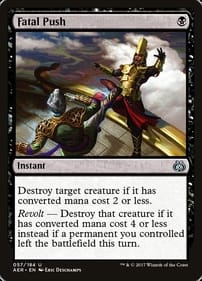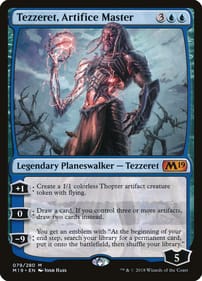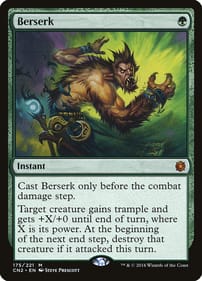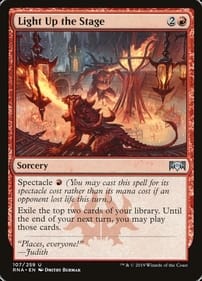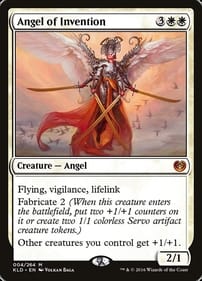Graphic-novel Gift Guide
By Dan Brown I love giving (and getting) graphic novels and comics at Christmas! As you’re shopping for family and friends this festive season, I’ve got some suggestions on which books to get the different people who made your list. Check it out! For the newbie graphic-novel reader: I would recommend a starter pack of Watchmen, The Dark Knight Returns and Maus. Released at roughly the same moment in the 1980s, these are the foundational graphic novels – along with Will Eisner’s A Contract With God – that showed comics could be taken seriously. For the superhero fan: I would give this person Irredeemable from Boom! Studios. Written by Mark Waid, it takes a look at what happens when an all-powerful hero in the mold of Superman goes off the rails. For the fan of Canadiana: Maurice Vellekoop’s I’m So Glad We Had This Time Together is a gay coming-of-age story set in Toronto and includes a lot of history about the queer community in the Big Smoke. There’s also Kate Beaton’s Ducks: Two Years in the Oil Sands, set in Alberta’s Oil Patch. For the fan of local talent: Derek Laufman has books like Bot 9 and The Witch of Wickerson for kids, plus titles such as Crimson Fall: The Shore Tower for mature readers. He recently published the first issue of The Rats of Ironwood and has taken over art duties on Skottie Young’s I Hate Fairyland series. A Byron resident, Laufman is as local (and as good a creator) as it gets. For the fan of overlooked gems: Get this person on your list anything Mouse Guard, Londoner Bryan Lee O’Malley’s Seconds, or Southwestern Ontario native Jeff Lemire’s The Nobody, the latter of the three being a re-telling of the H.G. Wells novel The Invisible Man in a small town. For the history buff: Maybe I’m in the minority, but I had not heard of Eadweard Muybridge, the pioneering photographer who was also involved in one of the most notorious murder trials of the 1800s, until Quebec graphic novelist Guy Delisle published this biography. A fascinating character whose story is told in a fascinating way. You could also try Scott Chanter’s Two Generals, about the D-Day invasion told from the perspective of two Canadian grunts. For the political buff: Are You Willing to Die for the Cause? is the first of a two-volume history of the FLQ, the separatist terrorists who are portrayed by veteran cartoonist Chris Oliveros as a bunch of stumblebums. For the art lover: I came relatively late to Dean Motter’s Mister X. Check out Mister X: The Archives or Mister X: The Modern Age, with its glorious retro look, billed as “a fusion of film noir, Art Deco and German Expressionism.” All of those elements combine to make a comic that will live in your imagination for a long time. And Los Bros Hernandez worked on some of the early issues of this Canadian classic! For the lover of the printed word: Anything, really, by Hamilton’s Joe Ollmann. If you want a starting point, try some of his short graphica, for instance Happy Stories About Well-Adjusted People. If you like what you read, move on to Fictional Father and The Abominable Mr. Seabrook. Don’t get me wrong, I love Joe’s art, too, but there are few comic creators whose voice comes through as clearly as Ollmann’s does. For the one who loved this summer’s Superman movies: The James Gunn film was based on a number of storylines, including All-Star Superman, Superman For All Seasons and Superman: Birthright. If you can find a compilation of John Byrne’s 1980s run on Superman, this person on your list will likely enjoy that one, too. For the one who loved The Fantastic Four: First Steps this summer: The Essential Fantastic Four Volumes 1-5 were the source material for this movie, with its retro-futuristic look. The new motion picture was dedicated to artist Jack Kirby, and these five volumes contain his entire influential run on the title with Stan Lee. For the one who is looking forward to Avengers: Doomsday next year: See my Fantastic Four recommendations. Also the Essential Super-Villain Team-Up Volume 1 and the individual issue The Invincible Iron Man No. 150 – in which Doctor Doom faces off against Iron Man. For the music fan: Scott Chantler’s Bix, Rush: The Making of a Farewell to Kings and David Collier’s Topp: Promoter Gary Topp Brought us the World. For the person who’s impossible to buy for: Why, a gift certificate, of course! So that’s it for my suggestions for this year. Are there any graphic novels/comics you are giving this year, or hoping to see under the tree? Let me know in the comments! Dan Brown has covered pop culture for more than 32 years as a journalist and also moderates L.A. Mood’s monthly graphic-novel group.
Take A Graphic Trip Across Canada
By Dan Brown In honour of our national holiday, and as a way to protest the tariffs from our southern neighbours, many Canadians are travelling in their own backyard this summer. But what if you aren’t in a position to make the trek? Then take a trip across Canada – in graphic-novel form. That’s right, you can go from coast to coast to coast by reading the work produced by our dominion’s many talented comic creators. So here are suggestions for how to acquaint yourself with the regions of this great nation by looking through the comics set in those places. The East Coast: No trip to the Maritimes would be complete without a shipwreck, so let’s start our journey with Call Me Bill by London graphic novelist Lynette Richards. It’s a mystery, it’s an adventure story, it’s a reclaiming of an LGBTQ figure from the past – and it all begins with a maritime disaster off Nova Scotia, where Beal Art grad Richards lives in Terence Bay. I also recommend D.Boyd’s Denniveniquity and Chicken Rising, which cover Boyd’s formative years in Saint John, which is the city in New Brunswick – the one in Newfoundland and Labrador is St. John’s. Got it? La Belle Province: My first suggestion is Michel Rabagliati’s Paul Up North, part of which takes place during a snowstorm in Laurentian cottage country. And of course, the title character didn’t wear his winter jacket: There is no more Canadian predicament than that! As for the Montreal portion of our cross-Canada tour, I’m proposing Are You Willing to Die For the Cause?, which recounts the early years of the FLQ’s reign of error (the would-be liberators targeted Canada Post mailboxes with their homemade bombs). It was drawn and written by publishing house Drawn & Quarterly founder Chris Oliveros. Ontario outside Toronto: First stop, Jeff Lemire’s Essex County, which lovingly recreates the evocative landscape and taciturn people of Southwestern Ontario. Also recommended is Walter Scott’s Wendy, Master of Art, which is set in Hell, a small Ontario city that has an awful lot in common with Guelph. Toronto: Yes, I agree with you, there are way too many graphic novels set in Canada’s largest city. So instead of inundating you with a long list of options, I urge you to hunt down Matthew Blackett’s Wide Collar Crimes, a collection of comic strips that were published in Eye Weekly in the early 2000s. No other comic evokes the absurdities of life in Toronto like Blackett’s work does. The Prairies: So there’s Shelterbelts, set in a rural Mennonite community in Manitoba, as well as Chester Brown’s Louis Riel, which likewise attempts to capture the vastness of the landscape. I know this might be a stretch, but for Saskatchewan I recommend any Superboy adventure pencilled by artist Tom Grummet in the 1990s – in an interview at that time, he told me the wheat fields he drew near Smallville were patterned after the farms outside the window of his Saskatchewan home. Alberta: Since the tar sands are so important to Canada’s economy, you will want to check out Ducks, Kate Beaton’s account of her two years working in Northern Alberta’s oil patch. This story is not for the faint of heart, so definitely not suitable for young readers. British Columbia: Worth hunting down is the New Yorker’s cartoon edition from Dec. 28, 2020. That issue features the short graphic story Junban from Jillian Tamaki, and is adapted from her grandfather’s notes. The six-page reminiscence covers the same themes as George Takei’s They Called Us Enemy, and achingly calls to mind the Fraser River of the past. The North: Finally, we come to the land of the ice and snow! You may have an easier time getting a hold of Scott Chantler’s Northwest Passage – set in Rupert’s Land – than the anthology of Nelvana of the Northern Lights stories put out by Hope Richardson and Rachel Richey in 2014, but it’s worth it. Taken together, these two selections offer bookends of Canadian comic-book culture, starting in the Second World War with the Canadian whites and moving up to the current day with talents such as Chantler. Yes, this list is incomplete! That’s by necessity. That’s also why I’m looking for suggestions from readers like you in the comment box below. What books would you add to the list? Let’s hear them, as well as a brief description of the parts of this country they represent. And happy Canada Day! Dan Brown has covered pop culture for more than 32 years as a journalist and also moderates L.A. Mood’s monthly graphic-novel group.
Looking Back at 2023: The Year in Comics
By Dan BrownThe categories are arbitrary. My picks are open to debate. You likely have come to totally different conclusions.That said, here are the highlights – according to no one but me – from the last year in the comics biz.Villain of the year: The hip dragon from Scott Chantler’s Squire & Knight graphic novel, who sounds to my ear like a beach bum. When attacked by a self-promoting paladin, he responds in a laconic way: “Pretty rude, man.”Hero of the year: Common sense, as portrayed in the same book, which comes from the Stratford-based comic creator. It outlines the adventures of a medieval do-gooder and his young apprentice, who refuses to jump to conclusions based solely on circumstantial evidence. Turns out common sense is actually not that common. Writer of the year: BealART grad Lynette Richards, for Call Me Bill, an evocative tale delving into a long-standing East Coast maritime mystery. Richards gives the title character, an actual mariner, a plausible back story, in the process paying tribute to someone who was ahead of the times. Artist of the year: London’s D.S. Barrick for his work on Murgatroyd & Nepenthe, which he describes as a tale of two travelers trekking through the hinterlands of the imagination. It’s a visual feast not to be missed.Comic of the year: Crimson Fall: Lambs of God. This Derek Laufman mini-comic about two mismatched characters, a cleric and a knight, can be read as a straightforward story about demons in a dungeon, but underneath that is a much broader debate about the limits of reason to explain the world around us.Graphic novel of the year: Palookaville No. 24, particularly the latest instalment of Nothing Lasts, Seth’s autobiography-in-the-making. He calls attention to the constructed nature of his life story, encouraging the reader to think about the way memory becomes fiction. Or was it always fiction? (I suppose Seth’s latest is technically a comic, but it has a hard cover so it qualifies as a graphic novel in my mind. It’s not like Seth is publishing it monthly.)Panel of the year: The final panel of Are You Willing to Die For The Cause?, the Chris Oliveros book about the FLQ’s early days. On page 134, he shows the police celebrating the demise of the FLQ – just as the separatist terrorists were about to embark on their bloodiest exploits. “Hurrah!” the officers cheer. Bitterly ironic. The same book features a panel on page 123 of an FLQ hideout littered with empty Labatt 50 bottles. It doesn’t get more Canadian than that!Cartoon of the year: A New Yorker cartoon by Ellis Rosen depicts God, wine glass in hand, explaining to an angel helper why heaven looks different: “I had the vastness of creation replaced with hardwood floors.” Originally published two years ago, it came up in my New Yorker desk calendar on Dec. 1.Understatement of the year: Bob Iger, Disney CEO, said the glut of Marvel content online and in movie theatres has “diluted focus and attention” among fans of the company’s superheroes. (The Marvels, which I’m told is a strong movie, debuted with less than $50 million at the box office on its opening weekend, a first for a Marvel release.)Comeback of the year: Michael Keaton reprised his role as the Dark Knight in The Flash. By many accounts, the funnyman was the best thing about the motion picture, which served as the swan song for the current phase of DC’s big-screen superhero adaptations.Disappointment of the year: Marvel introduced Doctor Aphra in its Darth Vader title way back in 2015, yet still no movie or show built around the amoral archeologist. At this rate, the gonk droid will have its own Disney+ series before Aphra.Dearly departed: Among the comic creators who died this year are Al Jaffee, Joe Matt, Keith Giffen and Chris Browne. I once had a lovely conversation with Browne about how he continued the Hagar the Horrible newspaper strip after his father retired. Just a really nice dude to interview. The world is poorer without these guys.Comic blog/website/web presence of the year: I continue to enjoy a Facebook group seemingly titled with me in mind, Old Guys Who Like Old Comics. Jeremy Kirby is also doing yeoman’s service preserving his grandfather Jack Kirby’s legacy with his group the King of Comics.Comic journalism of the year: The book Dirty Pictures by Brian Doherty is a history of the underground comics scene in the U.S, the surprising part being how much of an impact these often-crude publications made on mainstream comics culture. It shows what can be done in the medium without an industry censor.Now, over to you . . . what were the comic highlights for you in 2023? I want to hear all of your picks in the comment box below. Feel free to invent some categories!Dan Brown has covered pop culture for more than 31 years as a journalist and also moderates L.A. Mood’s monthly graphic-novel group.
New Oliveros Book Details FLQ’s Reign of Error
By Dan Brown The new book from cartoonist Chris Oliveros, Are You Willing to Die For the Cause?, is an insightful look at a dark chapter in Canadian history. It’s even, in a way, darkly funny.It’s the tale of a bunch of stumblebums cosplaying as terrorists who – if you believe them – didn’t set out to take any lives, but still ended up with plenty of blood on their hands.You know what happened during the October Crisis of 1970 in Quebec, right? Well, this graphic novel fills you in on what was happening in the decade prior to that pivotal moment. It is, in comic terms, the origin story of the FLQ, the group (I hesitate to call it an “organization”) that would eventually prompt Pierre Trudeau to trigger the War Measures Act.You may know Oliveros as the founder and former publisher of Drawn & Quarterly, which has become a force in the comics world since its inception in 1989.This volume is the first in a two-part series about the Front de Liberation du Quebec – the second book, yet to come, will deal with events that are better-known, like Trudeau’s hard-nosed response to the supposed “parallel power” that arose in la belle province by advocating, violently, for separation.By the end of the 1960s, different iterations of the FLQ had gained notoriety with, among other glorious feats, the blowing up of innocent Canada Post mailboxes. One FLQ honcho even imagined he was a contemporary of Fidel Castro, the communist revolutionary who had taken over Cuba not long before. If Oliveros’ goal is to show the would-be Quebec liberators to be amateurs, he does a good job.One of the FLQ members stores sticks of dynamite in his apartment pantry, next to the breakfast cereal his children eat. A guiding manifesto is dictated, seemingly improvised on the spot. And on at least one occasion, a bomber has to find his own way to the target site because no one in the FLQ has access to a car. (The authorities come across not only as inept, but corrupt to boot.)It’s clear the storytelling project here is to underline the difference between the grand ambitions of the terrorists, and how events actually played out in the real world. So the reader will see page upon page setting forth what was supposed to happen as envisioned in the plans of the FLQ’s commanders, followed by a second sequence outlining the less-than-impressive real results. Or Oliveros will depict a historical figure like former Montreal mayor Jean Drapeau recalling the reign of terror, then the next panels will outline what the historical record indicates really happened. For example, the FLQ robbery of a gun store in 1964 wasn’t supposed to go off the rails, no one was supposed to get hurt, yet the “panic and confusion” that ensues once the would-be terrorists storm the place turns the raid into a “fiasco” in which two employees are left dead. Oliveros goes over the scene several times to illustrate what happens in the fog of a play war.And in case you don’t agree with any of his conclusions, at the end of Are You Willing to Die For The Cause?, Oliveros carefully explains where he got key details, such as dialogue.Even better, the artist/writer pulls the curtain back on himself, showing the gaps in his own creative process. He is open about how he compressed some events in his narrative, and fictionalized other panels in the interests of clear storytelling, which makes sense: Although Oliveros was born in the 1960s, he wasn’t, you know, in the room where any of this happened.So it’s consistent with his overall project that he would point to the constructed nature of this comic. That doesn’t make the book any less tragic, or comedic. Of course, the ultimate irony is how despite all of the FLQ’s actions, including the dramatic and deadly ones that will be the subject of Oliveros’s next graphic novel, Quebec remains part of a united Canada. As this book demonstrates, the best-laid plans often go awry.Dan Brown has covered pop culture for more than 31 years as a journalist and also moderates L.A. Mood’s monthly graphic-novel group.






